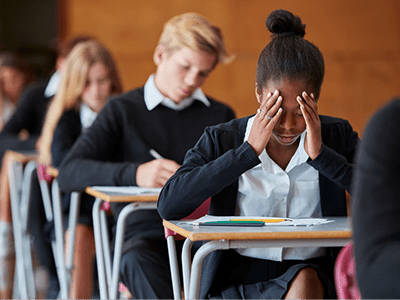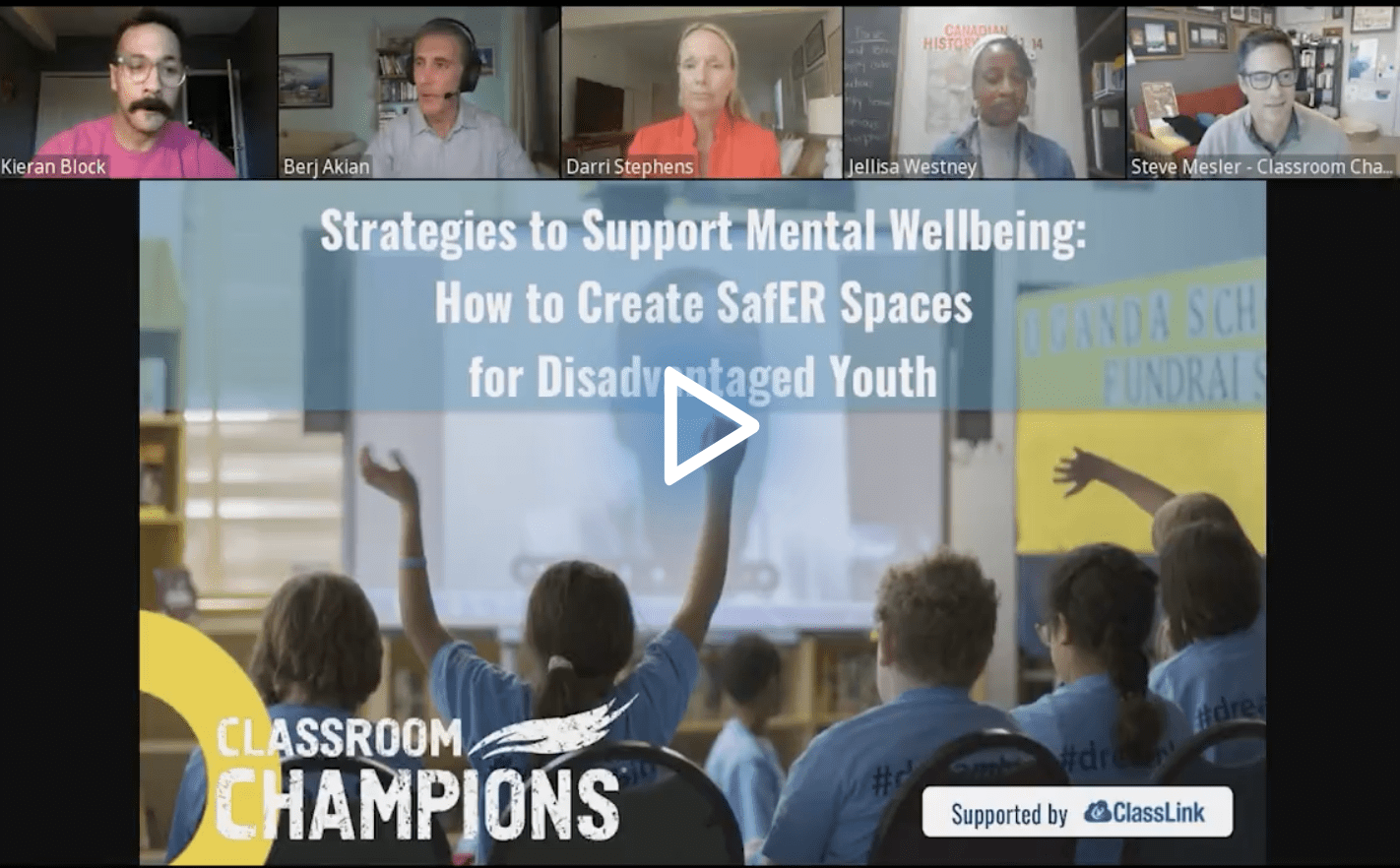Growing Students’ Social-Emotional Strength
Blog post by Michele Israel based on this edLeader Panel
Athletes live grit and resilience in order to push through stress and tension. They persevere through obstacles, practice self-discipline, and manage their emotions. But wait—don’t these sound like the social-emotional skills teachers are helping students grow?
In fact, yes. It turns out that a sports mindset is grounded in the principles and practices that promote social-emotional strength among young people and are especially beneficial to disadvantaged students.
In a recent edLeader Panel, “Strategies to Support Mental Wellbeing: How to Create SafER Spaces for Disadvantaged Youth,” athletes turned educators shared strategies for developing vulnerable students’ wellbeing.
Supporting Vulnerable Youth
Strong social-emotional skills are valuable to all students. But disadvantaged students are particularly vulnerable to complex life challenges, which data underscore. Teens from low-income families, for example, are more likely to engage in risky behavior. As a result, one in five low-income youth is often charged with an adult crime by 24. (There are currently over 70,000 incarcerated youth in the United States.)
Couple these disparities with additional issues plaguing young people overall: One in five youth between the ages of 13 and 18 experiences a severe mental health disorder; 37% of youth 14 and older with mental health issues drop out of school, and LGBTQ+ youth are 3.5 times more likely to attempt suicide.
These circumstances erode the cognitive, social, and emotional skills and attitudes young people need to succeed in school and today’s demanding, changing, and unpredictable world.
Essential Practices
Educators play a crucial role in propelling students’ social-emotional strengths. Former athletes and current educators Kieran Block and Jellisa Westney described methods they use (drawing on their sports experiences) to grow the skills and attitudes students need to navigate everyday stresses and what school and life demand of them overall.
- Establish safe classroom and online spaces―supportive and protective, non-threatening and judgment-free environments where everyone can feel comfortable expressing themselves. Each person’s experience is acknowledged to best accommodate their unique safety needs.
- Design ways for students to create connections that heighten their sense of belonging. This is significant for young people who may retreat or feel polarized, mainly when their intersectionality leaves them feeling disconnected or disrespected. Teachers must recognize the inequities privilege and access present and how a lack of awareness of students’ intersectionalities isolates them.
- Ensure that students’ differences are respected and discussed. Do not assume their interests or engagement preferences based on who they are, urged Block, who had the same experience. He was assigned to school groups addressing Black Lives Matter, but he was included without being asked or having a conversation about his involvement because he is a person of color, and thus it was assumed he would identify with students of the same race. Westney explained that there’s so much nuance in Blackness: The different experiences of Caribbean, Black Canadian, or African American people, for example, don’t make for automatic connections, for instance. So, teachers need to be aware of and stem such assumptions.
- Set up highly engaging online learning environments, recognizing that staring at a screen can be daunting and disengaging, undoing student connections.
Everyday Tools
Block and Westney also highlighted techniques that best support disadvantaged students in the classroom. These include:
- Pairing with students to build relationships while promoting their independence.
- Applying prompting hierarchy, which provides structured and level support through visual, verbal, or physical cues to move students to independence.
- Assessing students from a strengths-based stance to identify their strengths and use them to give students what they need to excel. (It’s also important to include parents in this work.)
- Generating trust with students to form caring connections.
- Growing students’ character and confidence, specifically by letting them frequently know that they can do things like go to college. Additionally, making sure youth contribute to their success and vocalize their opinions and values. Youth with a sense of purpose are less likely to engage in risky behavior.
- Acknowledging students’ lived experiences and inviting them to share what they need. When they feel capable, they don’t feel defined by what is stacked against them.
- Using positive classroom visuals and related “props” to promote acceptance, respect, and other critical values.
- Training teachers and other school staff about myths and stereotypes to build understanding, invite them to assess their values, and begin to address the critical issues of diversity, equity, and inclusion.
- Knowing when to refer students for professional mental health support.
- Establishing harassment-free environments and ensuring students participate in maintaining that environment to promote safety.
- Being mindful that students come to school at times angry or frustrated; they express those feelings in the classroom where they feel safe.
The strategies, practiced regularly and embedded into students’ daily school routines, can help shape disadvantaged young people’s long-term social-emotional health toward a fruitful and prosperous future.
Learn more about this edWeb broadcast, “Strategies to Support Mental Wellbeing: How to Create SafER Spaces for Disadvantaged Youth,” hosted by Classroom Champions and sponsored by ClassLink.
Watch the Recording Listen to the Podcast
Join the Community
School Health & Safety is a free professional learning community on edWeb.net that provides educators, school staff, school leaders, and district administrators with a forum to collaborate and discuss the issues and practices that can keep schools, students, and staff healthy and safe.

ClassLink empowers your students and teachers with instant access to their learning resources. ClassLink® LaunchPad includes a library of over 6,000 single sign-on apps and instant links to file folders at school and on Google, Office 365, Dropbox, and Box cloud drives. ClassLink Roster Server easily and securely delivers class rosters to any publisher using open technology standards. ClassLink Analytics gives decision makers the usage data they need. ClassLink is ideal for 1 to1 and BYOD initiatives.






Comments are closed.